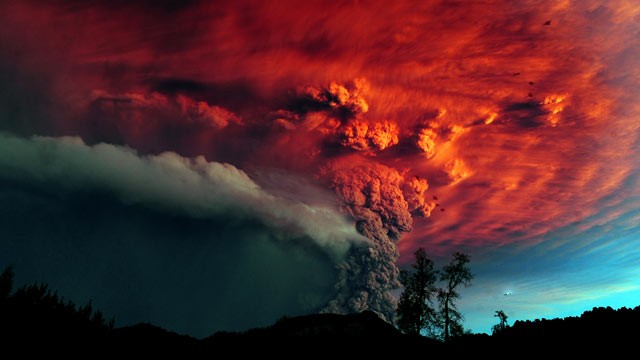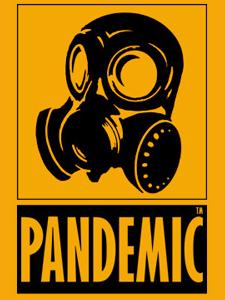Category Archives: SHTF
Awesome Homemade Zombie Apocalypse Killing Weapons
When the end comes eventually bullets will run out. Don’t toss your guns aside cause ya never know if and when you may run across a stash of ammo..but one thing is for sure…you will still have to protect yourself and those with you..so i present to you some of the best ideas to keep you swinging in the Z-POC







DOOMSDAY 2012 – The End of the Maya Calendar
 The year 2012 is only seven months away.
The year 2012 is only seven months away.
According to many people, this will mark the beginning of the end of the world as we know it. But what exactly does that mean? What exactly is predicted to happen in 2012?
Does it mean the planet is on the threshold of some galactic catastrophe? Or does it mean that the human race is on the threshold of a positive transformation that will touch our minds, bodies, and even our souls?
Or does it mean something else entirely?
The Controversy Over 2012
At present, there are tons of sites across the web that focus on the 2012 prophecy. These sites can all trace their roots back to the Mayan Long Count Calendar.
This calendar is a non-repeating, base-20 calendar that identifies a day by counting the number of days that have passed since the date of creation. For the Mayan, the date of creation equates to August 11, 3114 BCE on the Gregorian calendar.
August 11, 3114 BCE is the date. This date also was the start of the present 5,125-year cycle which is set to end on December 21, 2012.
This cycle is based on the Mayan study of astronomy. The Mayans realized the earth wobbles as it spins on its axis. This wobbling rotation causes the stars’ patterns of movement to drift gradually in the sky in a 5,125-year cycle.
With this information in hand, along with their knack for mathematics, the Mayan came up with their Long Count Calendar around 355 B.C.
The Translation of the Mayan Long Count Calendar
 The Long Count Calendar was rediscovered and translated in the 1950s. However, it was a 1966 interpretation of the Mayan Long Count Calendar that seems to have taken the world by storm.
The Long Count Calendar was rediscovered and translated in the 1950s. However, it was a 1966 interpretation of the Mayan Long Count Calendar that seems to have taken the world by storm.
In 1966, Michael D. Coe wrote in his book, The Maya, that “there is a suggestion … that Armageddon would overtake the degenerate peoples of the world and all creation on the final day of the 13th b’ak’tun.”
According to the Mayan Long Count Calendar, we are currently in the 13th b’ak’tun.
So, the big question is: What happens on the final day of the 13th b’ak’tun?
Theories About Armageddon
It seems everyone has their own idea about what is predicted to happen in 2012.
Since the Mayan were such astute astronomers, many people believe that the earth is doomed to end in a cosmic catastrophe. In particular, an interplanetary crash between Earth and Nirbiru, a planet supposedly discovered by the Sumerians.
 However, there is no real science behind this idea or most of the other astronomical predictions related to Mayan prophecy. So much so, that NASA has even created a websitedebunking most of these “predictions.”
However, there is no real science behind this idea or most of the other astronomical predictions related to Mayan prophecy. So much so, that NASA has even created a websitedebunking most of these “predictions.”
However, there are others who believe that December 21, 2012 will not mark the destruction of the planet, but rather some sort of spiritual change.
This idea comes with a lot of criticism. Most Christians seem to believe that there is absolutely no biblical evidence that the 2012 Mayan prophecy represents an accurate prediction of doomsday or spiritual enlightenment.
Many people try to relate 2012 with Hinduism. However, traditional Hindu scriptures do not agree to this linkage either. The 2012 prophecies do not coincide with the Hindu belief of Satya Yuga and Kali Yuga, the beginning and ending of the universe.
Will the World End in 2012?
So, what can we expect to happen on December 21, 2012?
For once, it seems that science and religion is on the same page. Even modern-day Mayans do not apply any real significance to the Long Count Calendar. There are no precautions or preparations being made in the scientific or religious realms.
However, mainstream science and religion has been known to be wrong before. The only thing that is certain is that on December 21, 2012 the winter solstice will occur. Beyond that, we will just have to wait and see.
ZOMBIE FURNITURE WTF
Looking for furniture that will both tie the room together and make your guests gag with fear?
BRC Designs probably has what you’re looking for. The razor-sharp minds over at the design house, based in Spartanburg, South Carolina, have unleashed a terrible plague upon the world of home decor: “zombie furniture.” These are seats and couches with dripping blood, raw patches that look like skin was torn off and a general appearance of getting ready to animate itself and shuffle over to eat your flesh. And the horror of this festering line doesn’t end there, with its origin stretching all the way over the ocean to Ghana’s famous carpenters of death.
An Xiao Mina at Core77 has the full story of how this sleep-disturbing (yet swanky!) stuff got made, but here’s the short version. BRC chief Benjamin Caldwell traveled to Ghana to apprentice with the country’s coffin builders, who produce unique boxes meant to reflect the lifestyle and accomplishments of the deceased. Picking up a plane and chisel, Caldwell settled in with Eric Anang, grandson of the renowned artisan Kane Kwei, whose studio has churned out coffins in the guise of red fish, flashy cars and, weirdly, a pig for the businessman who introduced swine to Accra.

Once he’d honed his skills, Caldwell then got around to creating his own monsters. His team digs holes in the dirt to create molds for wet concrete, which they pour in and then abandon in the ground for 30 days. (Some people in Ghana are buried in a soft bed of concrete, FYI.) After the month is up and the material has developed a little “character,” they pry it out and use it as the base for furniture.
Here’s where it gets raw, reports Mina:
To top it off, they stain the pieces with acid, itself a variable process, to create a deathly, out-from-the-grave feel. They focused on the rough patches in particular: “We stained these areas with a dull black and brown as if rotting flesh and then we dripped glossy red stain over the area creating the appearance of an oozing, rotten wound.” This variance keeps with the zombie theme but also contrasts sharply with the necessary precision of coffin-making….
“The first person who saw it said ‘It looks like someone died on this chair.'”
The name that Caldwell picked for his blood-soaked line? That would be “Risen in 30 Days,” a riff on the furniture’s resurrection from its soil jail.
While it may cause some people to curl into fetal positions, the furniture is indisputably original and kind of intriguing, like being at the scene of a gruesome murder. And to give it a positive spin, it won’t leave a wet spot on your pants or dress should you sit on it, like a real rotting carcass might.
I don’t see any prices listed for the “zombie chaise lounge” or “zombie sofa,” so you’ll want to hithim up on email if you want one of these stunners. Also available in the BRC catalog are less-abominable offerings, such as this chair made from old piano hammers and a seat called “Impractically Comfortable” containing 282 mini bottles of Southern Comfort. Arachnophobes, however, will hate the “Spider” line of furniture, with its multiple spindly legs and black hairlike backing.
All photos courtesy of BRC Designs.


SuperVolcanoes – This Is the Way the World Ends? Volcanoes Could Darken World

Super-volcanoes have probably caused more extinctions than asteroids. But until now it has been thought that these giant volcanoes took thousands of years to form — and would remain trapped beneath the earth’s crust for thousands more years — before having much effect on the planet.
But new research indicates these catastrophic eruptions, possibly thousands of times more powerful than the 1980 eruption of Mount St. Helens, may happen only a few hundred years after the volcanoes form. In other words, they may have a very “short fuse,” according to researchers at Vanderbilt University.
Such an event could make thermonuclear war or global warming seem trivial, spewing untold tons of ash into the atmosphere to block sunlight. The result would be many years of frigid temperatures, wiping out millions of species. A super-volcano that erupted 250 million years ago is now believed to have created the greatest mass extinction the world has ever seen, wiping out up to 95 percent of all plant and animal species. Some renegade scientists believe it was a volcano, not an asteroid, that killed off the dinosaurs 65 million years ago.
But is global suicide lurking right below our feet? Is a super-volcano about to blow its top? Not as far as scientists can tell. Such a volcano results from the accumulation of a giant pool of lava just a few miles below the ground, and there is no known formation anywhere on the planet that is expected to erupt in the immediate future.
Scientists, who could be wrong about that, have thought for decades that once that pool forms, it stays there for thousands of years before erupting. But the new study by geophysicists from Vanderbilt, along with colleagues at the University of Chicago and elsewhere, documents several lines of research showing that the trigger could be pulled quickly, possibly within a few hundred years.
“Our study suggests that when these exceptionally large magma pools form they are ephemeral and cannot exist very long without erupting,” Vanderbilt’s Guilherme Gualda said in releasing the study, published in the journal Public Library of Science ONE.
That research, as well as earlier research that led to a very different conclusion, was based on the formation of crystals in the molten magma that decay at known rates and thus provide a geological clock, dating various events in the history of the volcano.
According to Gualda, previous researchers looked at the decay of zircons, which are common in volcanic rocks, and concluded that the giant magma pools could exist for 100,000 years. But his team looked at the crystallization of quartz, the most abundant mineral in volcanic deposits, and concluded that such a pool would have to erupt in one-tenth of that time, and possibly in only about 500 years.
That makes the threat of super-volcanoes a bit more serious, but there’s no reason to panic.
Gualda’s team studied deposits in the Long Valley Caldera in northeastern California, where a violent eruption blew 150 cubic miles of molten rock into the atmosphere, blanketing much of North America with hot ash and dropping the earth’s surface more than a mile as it sank into the area once occupied by the magma. That was about 760,000 years ago, but all these years later the region still keeps a lot of scientists on the edge of their seats.
The Long Valley geology began misbehaving again in 1978 when a 5.4 earthquake struck six miles southeast of the caldera, suggesting that the volcano might be reasserting itself. In subsequent years that was followed by swarms of small quakes, which are closely associated with pending volcanic eruptions.
A couple of decades ago, trees began dying on nearby Mammoth Mountain from large amounts of carbon dioxide seeping from the magma, according to the U.S. Geological Survey.
Today, the caldera seems to be quieting down, despite several recent bursts of seismic events, but it is probably the most closely watched volcano on the planet. Scientists with the USGS are keeping a close eye on it, monitoring every little belch, and they insist there is no reason for the folks who live in California to be concerned. At least not yet.
Meanwhile, scientists at Oregon State University have been focusing their attention on Yellowstone National Park, where an eruption a couple of million years ago is believed to have been 2,000 times larger than Mount St. Helens. That region also shows constant signs of seismic unrest, and there have been eruptions there several times in the past, according to the Oregon researchers.
Incidentally, researchers at Washington State University in Pullman, who have also been studying Yellowstone, concluded earlier this year that the big eruption 2 million years ago wasn’t one blast, but two, separated by about 6,000 years.
But just because it was split into two parts doesn’t mean it was benign. The Washington researchers believe the first blast was the biggest, and it darkened the sky with ash from California to the Mississippi River.
So super-volcanoes cannot be ignored, and now it seems they can pull the trigger much more quickly than anyone had thought.
 said the country was not ready to defend itself against an avian flu pandemic. Have things changed since?
said the country was not ready to defend itself against an avian flu pandemic. Have things changed since?